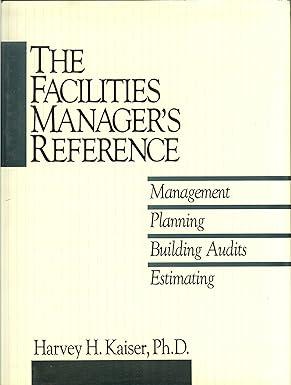Question
7. If a target population is defined as all 2,134 pickup truck owners residing in Tippecanoe County a. asking 100 owners their attitude toward a
7. If a target population is defined as all 2,134 pickup truck owners residing in Tippecanoe County
|
| a. | asking 100 owners their attitude toward a new truck style would be an example of a consensus. |
|
| b. | asking 80 owners their attitude toward a new design would be an example of a sample. |
|
| c. | asking all owners their attitude toward a new design would be an example of universal testing. |
|
| d. | asking only owners listed in the telephone directory would be an example of a statistical frame. |
|
| e. | None of the above are true. |
8. A researcher collects a small sample and finds that there is not sufficient evidence to draw a conclusion. The researcher then makes additional observations and finds this evidence inconclusive. The researcher continues making observations until a conclusion can be drawn. This research process uses _____________.
|
| a. | sequential sampling |
|
| b. | nonprobability sampling |
|
| c. | random sampling |
|
| d. | the principle of diminishing utility |
|
| e. | fixed sampling |
9. A research team wants to study the effects of social class on consumption behavior. They establish three different categories of social class in terms of amount of income. They then assign each field worker a specified number of interviews with people in each income category although the interviewers are allowed to select whom they interview. This is an example of __________.
|
| a. | quota sampling |
|
| b. | systematic sampling |
|
| c. | area sampling |
|
| d. | probability sampling |
|
| e. | random sampling |
10. The purpose of experiments is to determine causal relationships. Which one of the following is NOT one of the three criteria necessary for inferring that X causes Y?
|
| a. | X happens before Y |
|
| b. | The researcher hypothesizes that X causes Y |
|
| c. | There is no third variable that explains the relationship between X and Y |
|
| d. | X and Y are correlated |
11. Which of the following would increase the sample size by the greatest amount?
|
| a. | increasing the confidence from 68% to 95% confidence |
|
| b. | decreasing the confidence from 99% to 95% confidence |
|
| c. | increasing the precision from 5 to 10 |
|
| d. | increasing the precision from 30 to 10 |
|
| e. | decreasing the precision from 10 to 40 |
Step by Step Solution
There are 3 Steps involved in it
Step: 1

Get Instant Access to Expert-Tailored Solutions
See step-by-step solutions with expert insights and AI powered tools for academic success
Step: 2

Step: 3

Ace Your Homework with AI
Get the answers you need in no time with our AI-driven, step-by-step assistance
Get Started


